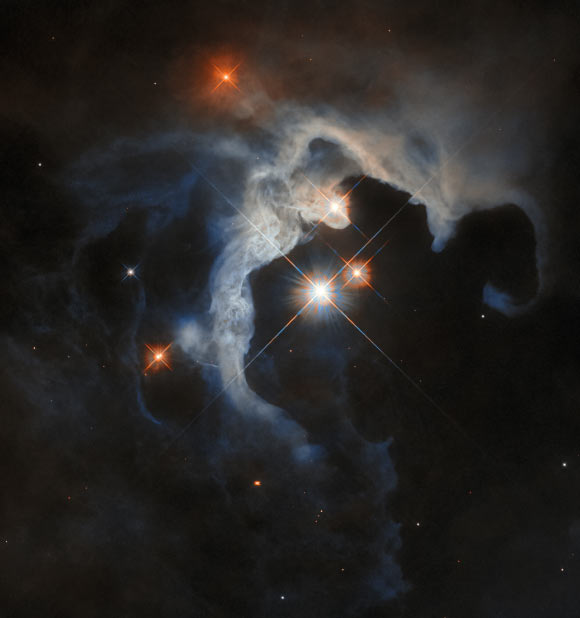Astronomers using the NASA/ESA Hubble Space Telescope have produced an outstanding image of the reflection nebula GN 04.32.8.
This Hubble image shows GN 04.32.8, a reflection nebula some 480 light-years away in the constellation of Taurus. The color composite was assembled from images taken in visible and near-infrared light. It is based on data obtained through two filters. The color results from assigning different hues to each monochromatic image associated with an individual filter. Image credit: NASA / ESA / Hubble / G. Duchêne.
GN 04.32.8 is located approximately 480 light-years away in the constellation of Taurus.
Also known as DG 41, it is a small part of the stellar nursery known as the Taurus Molecular Cloud.
“Reflection nebulae are clouds of dust in space that don’t emit their own light, as other nebulae do,” the Hubble astronomers said in a statement.
“Instead, the light from nearby stars hits and scatters off their dust, lighting them up.”
“Because of the way the light scatters, many reflection nebulae tend to appear blue, GN 04.32.8 included.”
GN 04.32.8 is illuminated by a system of three bright stars in the center of the Hubble image, mainly the variable star V1025 Tauri in the very center.
“One of those stars overlaps with part of the nebula: this is another variable star that is named HP Tauri, but is classified as a T Tauri star, for its similarity to yet another variable star elsewhere in the Taurus Molecular Complex,” the astronomers said.
“T Tauri stars are very active, chaotic stars at an early stage of their evolution, so it’s no surprise that they appear in a prolific stellar nursery like this one.”
“The three stars are also named HP Tau, HP Tau G2 and HP Tau G3; they’re believed to be gravitationally bound to each other, forming a triple system.”
“Eagle-eyed viewers might notice the small, squashed, orange spot, just left of center below the clouds of the nebula, that’s crossed by a dark line,” the researchers said.
“This is a newly-formed protostar, hidden in a protoplanetary disk that obstructs some of its light.”
“Because the disk is edge-on to us, it’s an ideal candidate for study.”
“We are using Hubble here to examine it closely, seeking to learn about the kinds of exoplanets that might be formed in disks like it.”
